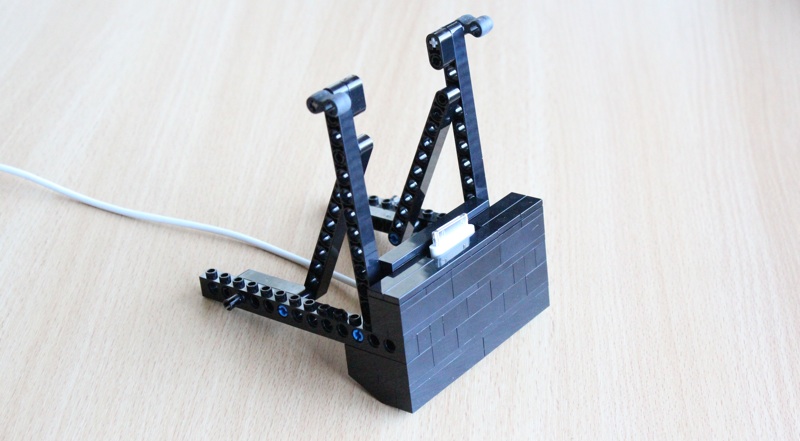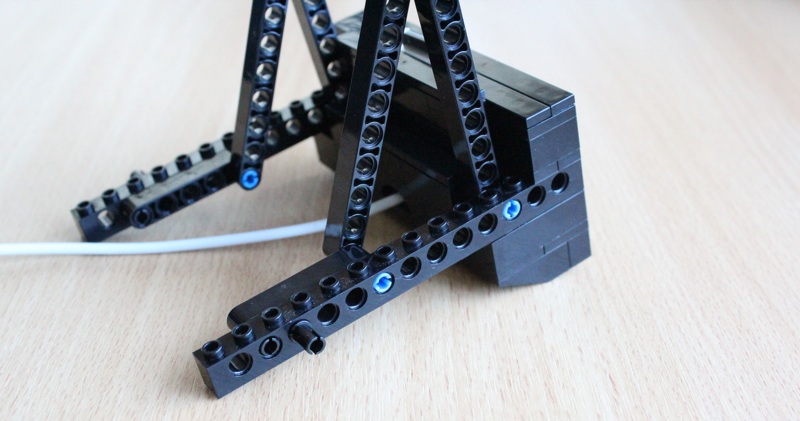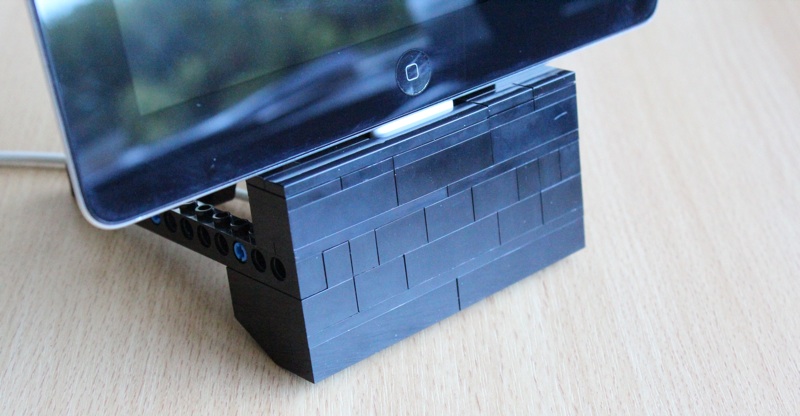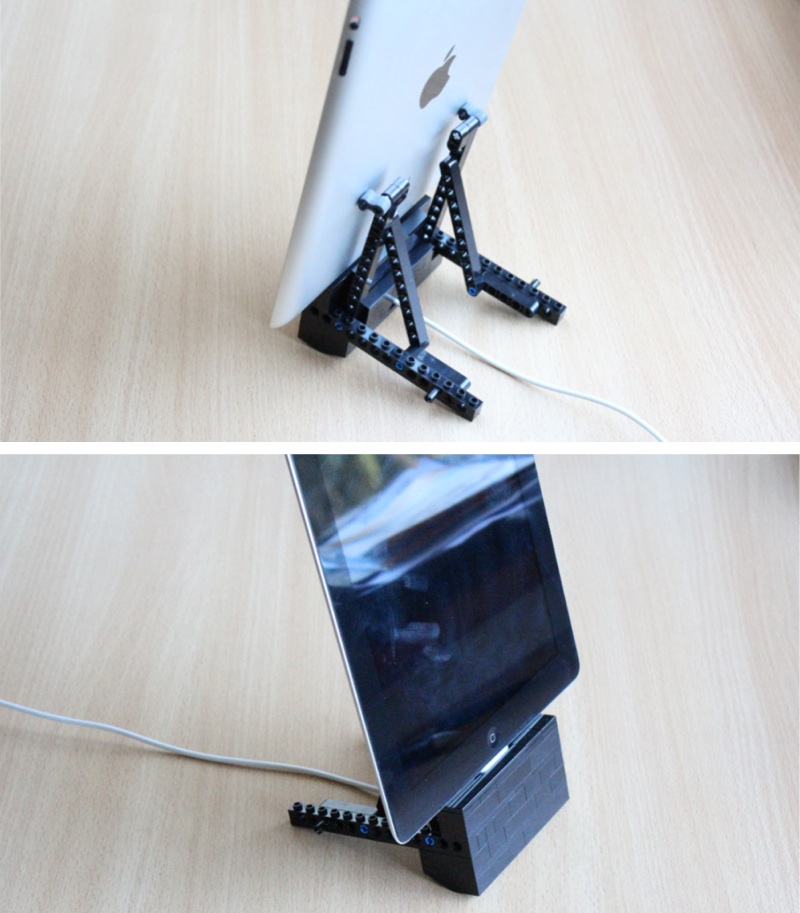 Lego is one of the world's most famous brands and products. Unsurprisingly a company within the UK called Daily Brick has decided to actually make Lego serve a real use by designing Lego kits which make Lego iPad charging docks and Lego iPhone docks. Today we're going to be taking a look at the one designed for the iPad. It retails for £19.95, with free shipping within the UK, and worldwide shipping is a reasonable £2.50.
Lego is one of the world's most famous brands and products. Unsurprisingly a company within the UK called Daily Brick has decided to actually make Lego serve a real use by designing Lego kits which make Lego iPad charging docks and Lego iPhone docks. Today we're going to be taking a look at the one designed for the iPad. It retails for £19.95, with free shipping within the UK, and worldwide shipping is a reasonable £2.50.
 When ordered from Daily Brick a package will arrive containing a bag of 79 Lego pieces and a sheet of paper informing the recipient to go to their website for instructions on how to assemble the Lego dock. The lack of written instructions can be excused here, when taking into account this is a dock designed to be used with a device that thrives on the Internet. The instructions on Daily Brick's website are presented in the form of a photo slideshow which shows how to build the dock brick by brick, replicating the instructions Lego provide with its own sets, the idea of which is to knock down language barriers. The slideshow was very easy to follow and it took us around 10 minutes to assemble the dock. It was an enjoyable and somewhat nostalgic experience. It's also quite rewarding knowing you built your own iPad dock.
When ordered from Daily Brick a package will arrive containing a bag of 79 Lego pieces and a sheet of paper informing the recipient to go to their website for instructions on how to assemble the Lego dock. The lack of written instructions can be excused here, when taking into account this is a dock designed to be used with a device that thrives on the Internet. The instructions on Daily Brick's website are presented in the form of a photo slideshow which shows how to build the dock brick by brick, replicating the instructions Lego provide with its own sets, the idea of which is to knock down language barriers. The slideshow was very easy to follow and it took us around 10 minutes to assemble the dock. It was an enjoyable and somewhat nostalgic experience. It's also quite rewarding knowing you built your own iPad dock.
 The dock looks professional and serious due to its all black design. We don't mind it and think it looks fine but when we hear Lego, we immediately imagine bright coloured bricks. So we'd love to see Daily Brick add a multicoloured offering up for sale too. The overall finished construction is rather solid but light, we dropped it accidentally onto a hard ground and the Lego didn't break up.
The dock looks professional and serious due to its all black design. We don't mind it and think it looks fine but when we hear Lego, we immediately imagine bright coloured bricks. So we'd love to see Daily Brick add a multicoloured offering up for sale too. The overall finished construction is rather solid but light, we dropped it accidentally onto a hard ground and the Lego didn't break up.
The dock sports a hole wide enough for either the Apple 30 pin or Lightning cable to fit through. Meaning it's compatible with the iPad 2, mini and the Retina iPad 3 & 4. The cable has to be fed through the dock in the building process and to remove it does sadly require disassembling some of the Lego. The cable runs out the back of the dock and, depending on the cable used, it can then be attached to a power source to charge the iPad when it's docked. The cable is held within the dock via clips, so it doesn't move around when frequently docking and undocking an iPad.
 Docking the iPad within a case isn't possible, even a very thin shell skin-like case will not fit. The bare iPad is solely compatible, its back doesn't rest against the plastic but instead against two protruding rubber pieces. Not allowing an iPad to be docked when within a case did deflate how frequently we used the dock. If static for a prolonged duration of time at our desks though, the Lego dock became a more attractive proposition to use. We could multitask from a computer to iPad quite happily. Interacting with the iPad in the dock is sturdy and solid, it doesn't wobble about at all when touching the screen. We also occasionally used the stand in other rooms than an office environment as a place to simply sit the iPad when it was charging.
Docking the iPad within a case isn't possible, even a very thin shell skin-like case will not fit. The bare iPad is solely compatible, its back doesn't rest against the plastic but instead against two protruding rubber pieces. Not allowing an iPad to be docked when within a case did deflate how frequently we used the dock. If static for a prolonged duration of time at our desks though, the Lego dock became a more attractive proposition to use. We could multitask from a computer to iPad quite happily. Interacting with the iPad in the dock is sturdy and solid, it doesn't wobble about at all when touching the screen. We also occasionally used the stand in other rooms than an office environment as a place to simply sit the iPad when it was charging.
 Because the charging connector is always prominent the iPad can only ever be used in portrait view when docked and there is no typing position.
Because the charging connector is always prominent the iPad can only ever be used in portrait view when docked and there is no typing position.
This novelty iPad stand will definitely put a smile on many faces when they first catch eyes on it. Its real world practicality could be beneficial to you if you want to have a little bit of style in an iPad docking stand too.

